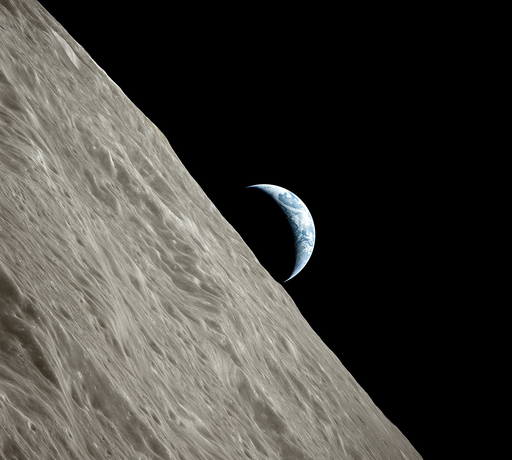
Celebrate National Moon Day by learning about our partner in space, with Dr. Wesley Fuhrman, the JHU APL lead for the Lunar Surface Innovation Initiative (LSII), which works to develop technologies needed for a sustained presence on the lunar surface, who, in this talk, will cover the highest-priority science questions and the technologies that drive our exploration in the modern era of lunar discovery.
The Moon has been our partner in space for most of Earth’s history and holds a record of events spanning the past ~4.5 billion years. As the only other planetary body for which we have samples from a known geological context, the Moon has informed our understanding of the age of Earth, how planets form and evolve, and the impact flux that has shaped the Earth–Moon system. Yet despite its proximity, we have only barely begun our exploration of the Moon.
The Apollo era fueled 50 years of scientific studies and technological advances. It gave prominence to the field of planetary science, which allows us to appreciate the planets and asteroids as more than wandering points of light in the sky. As we move into the Artemis era, NASA and its international partners are working to build a long-term presence on the lunar surface that will yield extraordinary new science and be a proving ground for crewed missions beyond the Earth-Moon system.
Artemis base camp is expected to be at the lunar south pole, where ridges and crater rims provide long periods of low-angle sunlight. The abundant solar power here can enable extensive operations, including development of infrastructure and in-situ resource utilization—engineering challenges far-afield from typical space exploration. Also within this region are craters with permanently shadowed regions, unexposed to the sun for billions of years and hovering at temperatures akin to the surface of Pluto. These dark, cold depths hold the promise of water ice, rich with science and a key resource that can advance sustainment and exploration.
Dr. Wesley Fuhrman is the JHU APL lead for the Lunar Surface Innovation Initiative (LSII), which works across government, industry, non-profits and academia to develop technologies needed for a sustained presence on the lunar surface. In this role he oversees all APL LSII activities in support of NASA Space Tech, which include research, technology assessment, and operation of the Lunar Surface Innovation Consortium (LSIC, Directed by Rachel Klima). Wesley provides technical leadership in evaluating future mission needs, and coordinates across technology domains to help achieve NASA’s exploration architecture. He defines the strategy, goals, and objectives of the APL LSII effort in close coordination with the APL LSII Leadership Team and NASA Space Tech.
